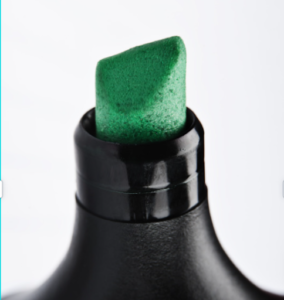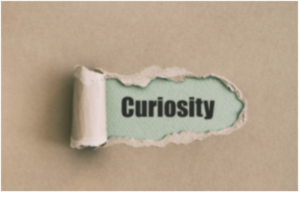
So before I say anything, I know that many teachers have experienced this really annoying phenomenon…
You have your clean whiteboard and a new pack of dry erase markers. You are READY to deliver your lesson with students on a concept. You just grab one of the markers from the pack and start writing. Absolute panic sets in as you look at the color of the marker. IT’S GREEN! Now you won’t be able to erase these notes before the next hour. I remember that I would be practically scrubbing the board in a sad effort to get ready for my next group of students. I used to go so far as to just remove all of the green markers from each pack because who needs that hassle, am I right? I was recently checking out YouTube for inspiration on teaching strategies, and I ran across this student, Anna, who had the same problem as me with the green marker. It’s not just me! I highly encourage you to watch her video, she does an excellent job at thinking through the inquiry process with an anchoring phenomenon.
Now I know you may be thinking, why should you care so much about a marker? Well, it’s not so much about the fact that they just don’t erase as well, it is more about the way that Anna got to her conclusion in her video. She was able to hook me into her experiment with a common phenomenon that I have personally experienced, and she kept investigating and asking more questions until she came to a conclusion. She referred to this as the scientific method, which is partially true. It is really the scientific inquiry process. I’ll go one step further that the inquiry process can be applied in all areas, not just science!
First, let me outline four steps to a successful inquiry lesson.

- Students develop questions that they are interested in answering given a topic or prompt. Teachers should have secret questions that they will be using too(More on this later!).
- Students will research to find an answer, usually this leads to more questions! So it is really an iterative process.
- Students should come to a final conclusion and share or present their findings.
- Students should reflect and make note of what they liked and didn’t like about the process.
I know at least one person is thinking this. “I think that this sounds great, but I have to teach my content standards. I don’t have time for students to ask questions about their interests!” While it does seem like there is little room to breathe in a day, we have to remember that we are teaching students to be problem-solvers. The goal is not to just pass a test, it is to be a critical thinker. This is where your secret teacher questions can come in to save the day! Let’s say that you have a reading passage coming up about tornadoes that will focus on reading comprehension or a math lesson about building a garden using geometry concepts. What if you let the students take a detour before getting to your secret teacher questions (content standards)? This can build interest with students and give them ownership over their learning. Check out this article “What the heck is inquiry-based learning?” by Heather Wolport Gawron if you are interested in learning more about how to do this in your classroom.
Let’s say you are not ready to fully implement inquiry-based learning, but you would like to dip your toes into the water. There are some instructional strategies that can spark curiosity in students and help to give you a vision of how inquiry might look in your subject area.

1. See, Think, Wonder: For this strategy, you give students a prompt or picture. They simply write down all of the things that they see, think, and wonder about the picture or prompt. This practice gives students a safe way to engage with new material and can spark their curiosity on different topics. You can see more about this strategy in an episode of Branching Out on the Kane County Roe YouTube channel.
2. Options Explosion: This strategy is cool because it forces students to think outside of the box. You will provide a task to students and identify three obvious solutions. The students are tasked with finding the “hidden” solutions. These not-so-obvious solutions are then shared with the class. To learn more about this, check out this link from Project Zero at the Harvard Graduate School of Education.
No matter if you are just trying an inquiry strategy to see if you like it, or if inquiry is fully implemented in your classroom, you are giving students the chance to think critically, and you are empowering them to own their learning. How might this look in your classroom? Do you have any awesome strategies that you use for inquiry? Please join in the conversation by tagging us @KaneCountyROE.
I almost forgot! Anna, I feel your pain with that green marker. Let’s hope that you are right and they have fixed the formula to erase more easily! Teachers everywhere will no longer be hiding all of the green markers in a desk drawer.

Raven Szalkowski – Professional Learning Coordinator
(t):630-762-2056
(e):rszalkowski@kaneroe.org
